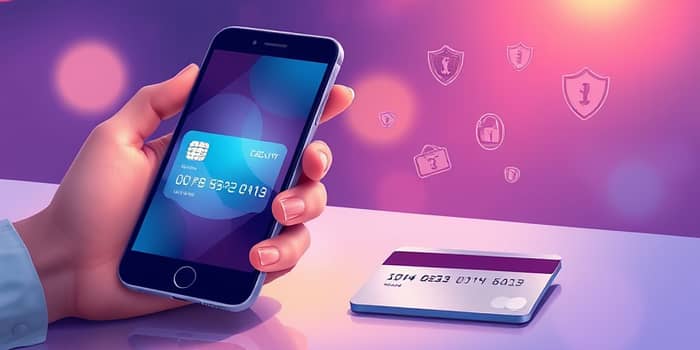In a rapidly evolving payment landscape, consumers face a pivotal choice between digital versions of traditional credit cards and their classic counterparts. Each option offers distinct advantages, challenges, and ideal use cases. By examining features such as security, convenience, and acceptance, users can determine which card aligns best with their spending habits and lifestyle.
Understanding Virtual and Physical Cards
Virtual credit cards are entirely digital, accessible via mobile apps or web platforms. They generate a separate number for each transaction and do not have a tangible form in your wallet.
In contrast, physical credit cards appear as a physical plastic or metal credit card embossed with your name, account number, chip, and magnetic stripe, ready for in-person and online transactions.
Feature Comparison
Below is a snapshot of how virtual and physical cards stack up across key dimensions:
Advantages of Virtual Credit Cards
Virtual cards excel in the online sphere, offering instant issuance and flexible spending control. They let users generate a new number for each purchase, which reduces fraud exposure and simplifies budget management.
- Superior security with one-time use numbers
- Custom spending limits per merchant
- Immediate access, no mailing delays
- Ideal for trial subscriptions and free trials
Businesses benefit from issuing virtual cards to employees for controlled online expenses, ensuring receipts match the approved spending caps.
Advantages of Physical Credit Cards
Physical cards maintain an edge in universality. They are accepted in all retail locations, ATMs, hotels, and rental agencies, offering convenience in everyday situations.
- Universally accepted at all merchant points
- Supports cash withdrawals at ATMs
- Stable card numbers for recurring payments
- Familiar and comfortable for all users
For travel and in-person identification, a physical card often remains indispensable, particularly when merchants or service providers require a tangible payment method.
Drawbacks to Consider
Neither card type is without limitations. For virtual cards, common drawbacks include refunds that may stall if the virtual number changes, limited merchant support for digital-only payments, temporary numbers expiring before recurring charges process, and dependence on internet connectivity or device access. Physical cards, on the other hand, carry risks of theft, skimming, or cloning, and require a waiting period for issuance after approval.
Security Face-Off
Security remains a decisive factor. Virtual cards shine with disposable one time virtual card numbers that safeguard the true account details. If compromised, these numbers can be deactivated instantly without affecting the primary card.
Physical cards, while bolstered by chip and PIN protections, remain vulnerable to theft skimming or cloning. In cases of data breaches, the actual card number may be exposed, potentially leading to unauthorized transactions.
Use Case Scenarios
Choosing the right card often comes down to specific needs and contexts. Below are typical scenarios illustrating optimal use for each card type.
- Online shopping and one-time payments favor virtual cards
- Travel, hotel check-ins, and car rentals require physical cards
- Managing multiple small subscriptions is easier with disposable numbers
- Cash advances and ATM needs depend on physical cards
Combining both card types can create a balanced payment strategy, leveraging the strengths of each.
Consumer Trends and Decision Factors
Virtual card adoption continues to grow among tech-savvy demographics, driven by rising concerns over online fraud. However, adoption is influenced by issuer support and merchant acceptance.
When deciding between card types, consider primary spending habits (online versus in-person), need for recurring payment stability, desire for advanced security features, and whether you rely on ATM access and cash withdrawals.
A dual strategy often emerges as the best approach, using virtual cards to secure online transactions and physical cards for universal acceptance and cash needs.
Conclusion
There is no one-size-fits-all winner in the battle between virtual and physical credit cards. Each offers distinct advantages that cater to different consumer priorities. Virtual cards empower users with enhanced security for online transactions and precise spending controls, while physical cards deliver universal acceptance and flexibility in real-world scenarios.
Ultimately, savvy consumers may opt to keep both card types in their financial toolkit. By doing so, they harness the best of digital innovation and traditional payment reliability, crafting a comprehensive strategy that adapts to any purchasing environment.
References
- https://www.experian.com/blogs/ask-experian/pros-cons-virtual-credit-cards/
- https://www.airwallex.com/us/blog/virtual-cards-benefits-and-disadvantages
- https://www.artsyltech.com/blog/Credit-Card-vs-Virtual-Credit-Card
- https://www.capitalone.com/learn-grow/money-management/virtual-cards-shopping-online/
- https://ramp.com/blog/are-virtual-credit-cards-safe
- https://www.getonecard.app/blog/physical-card-vs-virtual-card/
- https://statrys.com/blog/what-is-a-virtual-credit-card
- https://statrys.com/blog/virtual-vs-physical-cards










